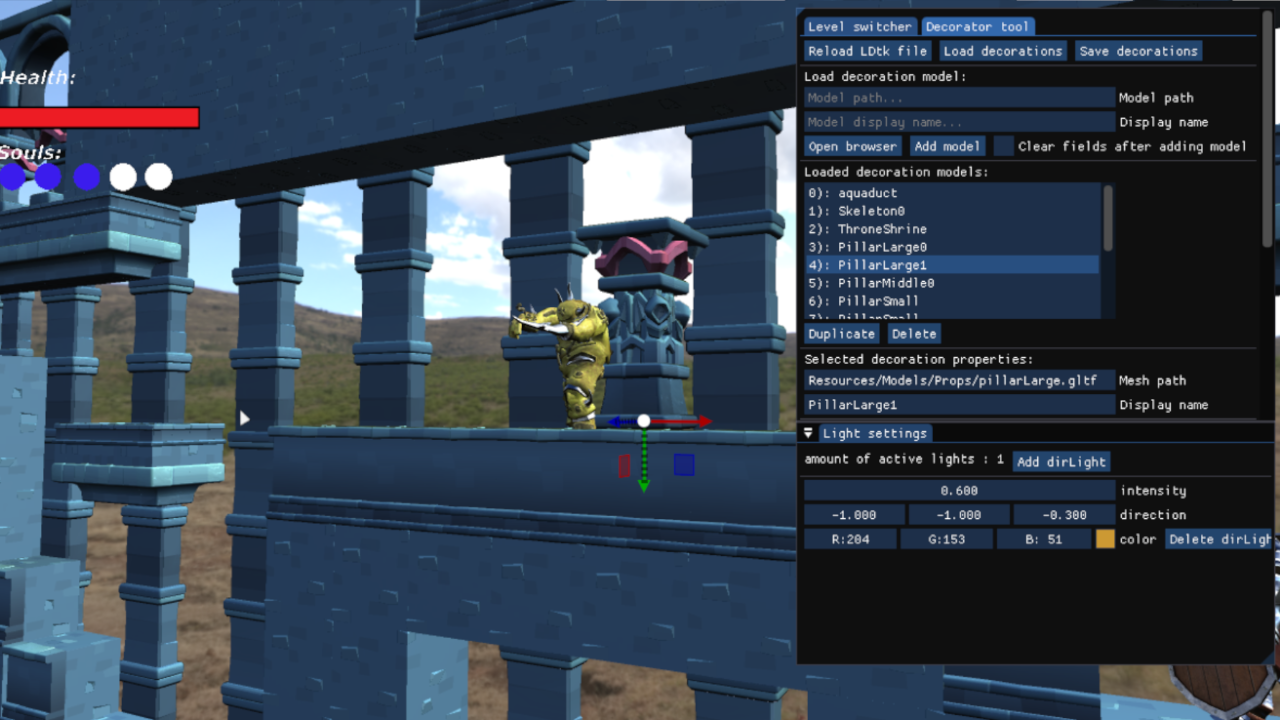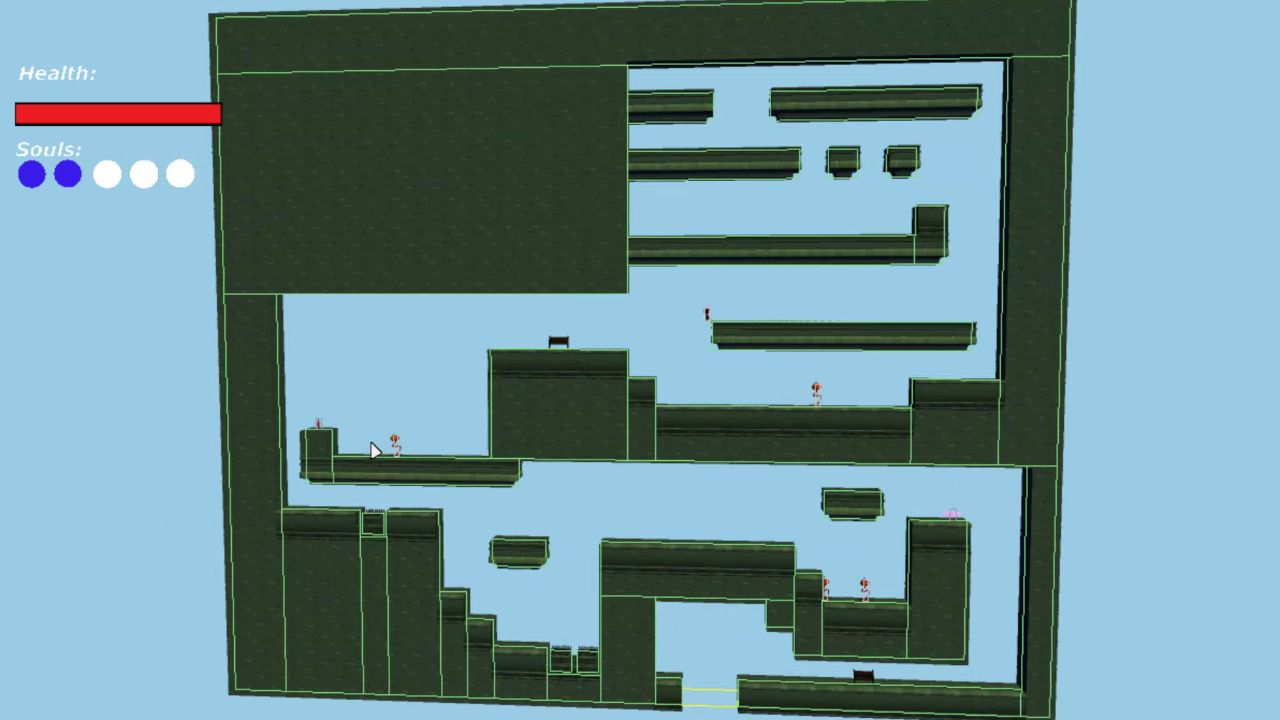EGO Engine
Custom game engine for Metroidvania-style games
Quick overview
About this project
EGO Engine is a custom game engine, specifically designed for
Metroidvania-style games. This was the first time that I worked
on creating a custom game engine. This is also when I discovered
that I really enjoyed the challenging task of creating custom
game engines.
The engine runs on both Windows and Xbox One. For this project, I primarily worked on implementing the ECS (using EnTT), creating a system for saving and loading the level using Cereal (a serialization library), managing all entities, as well as tools for creating and decorating the levels.
This is a student project made during my 2nd year at Breda University of Applied Sciences.
My contributions to the project
During this project, I mostly worked on developing the engine.
My biggest contributions will be listed below:
 A screenshot of the decorator tool.
A screenshot of the decorator tool.
 This image demonstrates a zoomed-out level. The lines
demonstrating the different colliders, generated using
the greedy meshing algorithm.
This image demonstrates a zoomed-out level. The lines
demonstrating the different colliders, generated using
the greedy meshing algorithm.
Lorem ipsum dolor sit amet, consectetur adipisicing elit, sed do eiusmod tempor incididunt ut labore et dolore magna aliqua. Ut enim ad minim veniam, quis nostrud exercitation ullamco laboris nisi ut aliquip ex ea commodo consequat.
Lorem ipsum dolor sit amet, consectetur adipisicing elit, sed do eiusmod tempor incididunt ut labore et dolore magna aliqua. Ut enim ad minim veniam, quis nostrud exercitation ullamco laboris nisi ut aliquip ex ea commodo consequat.
Lorem ipsum dolor sit amet, consectetur adipisicing elit, sed do eiusmod tempor incididunt ut labore et dolore magna aliqua. Ut enim ad minim veniam, quis nostrud exercitation ullamco laboris nisi ut aliquip ex ea commodo consequat.
Lorem ipsum dolor sit amet, consectetur adipisicing elit, sed do eiusmod tempor incididunt ut labore et dolore magna aliqua. Ut enim ad minim veniam, quis nostrud exercitation ullamco laboris nisi ut aliquip ex ea commodo consequat.
Lorem ipsum dolor sit amet, consectetur adipisicing elit, sed do eiusmod tempor incididunt ut labore et dolore magna aliqua. Ut enim ad minim veniam, quis nostrud exercitation ullamco laboris nisi ut aliquip ex ea commodo consequat.